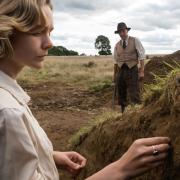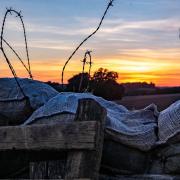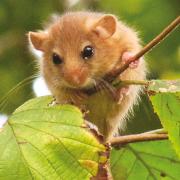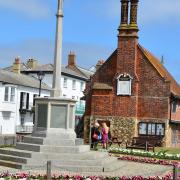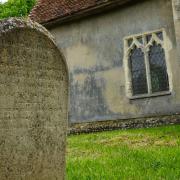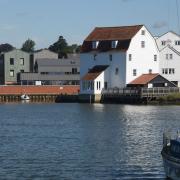RSPB Minsmere has turned 70. John Grant, who’s been visiting the reserve for most of his life, tells how the greatest story in British nature conservation came about and why it has such a place in the nation’s heart

Walk south from the crumbling cliffs where constant coastal erosion is diminishing Dunwich Heath. The crunch-crunch of footfall on sand-swept shingle mixes with the murmurs of the wind through dune-top marrams.
On the left, brilliant white North Sea surf breaks with each grey wave’s landfall. On the right is a regimented line of concrete blocks, some as upright as the dark war-time day they were put there in 1940, some tilted by time and now standing, in Suffolk parlance, ‘sloightly on th’ huh’.
Each concrete cube is a stark, sombre, reminder of war – each positioned to deter the grimly anticipated invasion of Nazi hordes who were then perpetrating unimaginable horrors less than 100 miles to the east in occupied Holland. The 30th block you pass as you continue southwards is the most special of all.

It marks the beginning of perhaps the greatest story in British nature conservation. Just three words and a date, inscribed by a finger or a stick in the setting concrete that had been poured into makeshift wooden moulds by British soldiers defending our shores, symbolise and encapsulate the start of the story of RSPB Minsmere – the birth of Britain’s best-known, best-loved, and to many simply the best, nature reserve.
‘Wimpey’s defence line 1940’ the inscription on the top of the block reads (there is a spelling error – see if you can spot it when you visit), scrawled with Dad’s Army-style humour, the gouged graffiti infused with defiant British Bulldog spirit. Behind this thin grey line lies what was a pancake-flat expanse of rough grazing marsh.
It was the perfect terrain for a Nazi advance, if the blocks and a formidable arrangement of angled wooden and metal spikes on the nearby shingle were overcome. And so, for good measure, in June 1940, Minsmere Sluice was opened to allow the sea to rush in.

The structure’s mechanism that enabled the exit of fresh water from the New Cut – a straight-as-a-die channel stretching from near the hamlet of Eastbridge to the sea, and excavated more than 100 years before to ease the frequent flooding of Minsmere Levels – was closed.
Waters from both sources spread over this flattest of landscapes, sealed in to create an impenetrable 400-acre waterland. The first chapter in RSPB Minsmere’s modern history had been written.
Chapter Two started seven years later. There’s an old conservation adage along the lines of ‘provide nature with a home and nature will find it’. Avocets did just that.

On April 8, 1947, four pairs of these exquisitely graceful black and white ballerina wading birds were found on a muddy, reed-fringed Minsmere islet. The thrill of the discovery must have been intensely electrifying. The species had not bred in Britain for more than 100 years.
To their eternal credit, a small band of local in-the-know volunteers mounted dawn-to-dusk surveillance of Minsmere’s top-secret new breeding birds, led by landowner Capt Stuart Ogilvie with Brig HM Stanford, his brother Lt-Col JK Stanford and Maj Esmond Lynn-Allen, of nearby Scott’s Hall.
Local folklore has it that they dare not even mention the word avocet in public, using the codename ‘zebras’ instead, for fear of alerting egg-collectors to the historic happenings out on the marshes.

They watched and waited, unaware that at Havergate Island, about 12 miles to the south, another small colony of avocets had taken up residence, again thanks to war-time activity.
A stray shell from the nearby Boyton firing range had damaged an island marsh sluice and inadequate repairs had allowed a breach of sea water, creating conditions much to the avocets’ liking.
Such was the secrecy surrounding both coincidental colonisations, it is said that the only person to know of both events at the time was one Geoffrey Dent, then chairman of the RSPB’s Watchers’ Committee. At both colonies, tiny cute bundles of brown and white down, each with comically stumpy up-turned bills and dangling two outsized pastel-blue legs, grew into black-and-white beauties.

The avocet’s British homecoming was under way. At Minsmere the species has bred every year since 1963 and the birds’ widespread national success is one of the UK’s greatest conservation triumphs.
With Minsmere and Havergate firmly on the RSPB’s radar, the society more-or-less immediately leased 1,500 acres of marsh, wood and heath at the former and two years later bought the latter outright.
The wiry and bespectacled Dick Wolfendale was moved from the RSPB’s East Wood, Cheshire, to warden Minsmere during subsequent breeding seasons but the pivotal point in the reserve’s history was the arrival in 1959 of the late, great Bert Axell as its first full-time warden.

It was a ‘marriage’ made in heaven. A visionary genius of wildlife habitat creation, Bert became a towering colossus of conservation in his 17 years of masterminding Minsmere. He could be brusque in response to foolishness and often showed disdain for rarity-obsessed birders but, more often than not, he was charming and supportive of anyone who showed a real love of birds.
His own passion was combined with ingenuity. He designed and orchestrated the creation of Minsmere’s famous Scrape in the 1960s, having realised that the area flooded in war-time was losing its wildlife value.
The creation of shallow lagoons, with salinity levels controlled by sluices and islands for nesting waders, terns and gulls, re-invigorated Minsmere’s wetlands.

But Bert went further. He was ahead of his time in many ways, and wanted as many people as possible to see Minsmere’s birds, so he designed and had built a series of birdwatching hides overlooking reedbeds and at strategic points around the Scrape, which he referred to as a ‘Wembley stadium of birdwatching’.
Even so, in those early days access to the reserve was strictly limited. Entry permits had to be obtained from RSPB headquarters at Sandy well in advance of a visit. The site was even closed on certain days of the week. And woe-betide anyone caught on the reserve without permission.
The story of Minsmere’s rise to the exalted international status it enjoys today reflects the dramatic increase in the public’s interest in nature. It now receives about 100,000 visitors a year, unthinkable in 1947.

It is renowned for the warmth of its welcome and the breadth of its attractions, as well as its major contribution to Suffolk’s economy. Friendships, love affairs, marriages – all have blossomed thanks to Minsmere.
In 2014, 2015 and 2016 it hosted the hugely popular BBC Springwatch series and Minsmere’s many devotees hold the reserve in almost religious reverence. It is easy to see why there is such deep affection for this sparkling jewel of a place.
Its biodiversity is greater than that found at any other site of similar size in the UK. Having grown with new RSPB land acquisitions to more than 2,000 acres, Minsmere is now a life-affirming mosaic of habitat types – vast, rippling reedbeds, shimmering purple heaths, extensive woodlands and wetlands, coastal scrub, grazing marsh and shingle beach.

Its dazzling array of habitats is the key to the diversity of wildlife the reserve supports – about 5,700 species all told. They range from the tiniest microscopic invertebrate to the mighty red deer and from highly specialised flora to weird and wonderful fungi.
Such abundance cannot possibly be enjoyed in a single visit, of course. But on any given day throughout the year – save for Christmas Day and Boxing Day – the family-friendly reserve welcomes visitors with open arms and offers the expert naturalist and the raw beginner alike a virtually unrivalled wildlife experience.
Those concrete blocks out on the dunes are 78 years old this year, and time is inevitably taking its toll. An ominous crack runs across the one bearing the Wimpey’s inscription, for example.
Perhaps they merit Listed Building status, and perhaps a Blue Plaque should be fixed to block No 30 - proclaiming it to mark the very birth of RSPB Minsmere.
__________________




